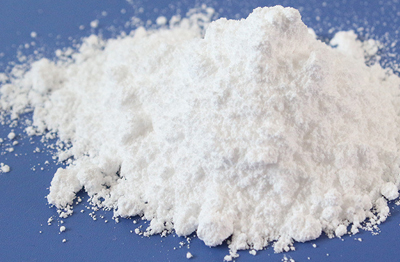
Lithium fluoride is an inorganic compound with the chemical formula of LiF. It is an alkali metal halide. It is white powder at room temperature. It is slightly soluble in water, insoluble in alcohol and soluble in acid. It is mainly used as analytical crystal in wavelength analysis X-ray fluorescence spectrometer, desiccant and fluxing agent. It can also be used in enamel industry and optical glass manufacturing.
Chemical formula: LiF
Molecular weight: 25.939
Melting point: 845 ℃
Water solubility: slightly soluble
Hazard symbol: T
Physical Properties
Melting point: 848 ℃
Density: 2.64g/cm3
Boiling point: 1681 ℃
Refractive index: 1.3915
Appearance: White powder
Solubility: slightly soluble in water, insoluble in alcohol, soluble in acid
Chemical properties
Soluble in hydrofluoric acid to form lithium hydrogen fluoride: LiF+HF→LiHF2。
Toxicology Data
Acute toxicity: LD 50:200 mg/kg (oral in guinea pigs).
Application
Mainly used as analytical crystal in wavelength analysis type X-ray fluorescence spectrometer, also used as desiccant, flux, also can be used in enamel industry, optical glass manufacturing, etc.
Storage method
Store in a cool and ventilated warehouse. Keep away from fire and heat source. Keep away from direct sunlight. Package tightly. Store separately from oxidants, acids and food chemicals. Do not mix storage. Storage area should be equipped with suitable materials to contain leakage.
Fire protection measures
Hazardous characteristics: Decompose in case of acid, giving off corrosive hydrogen fluoride gas. Decompose in case of high heat, giving off highly toxic flue gas.
Hazardous combustion products: hydrogen fluoride, lithium oxide.
Extinguishing method: Firefighters must wear fire-proof and anti-toxic clothes, and put out fire in upwind direction. When putting out fire, move containers from fire site to open place as far as possible, and then select proper extinguishing agent according to fire cause
Precautions for operation
Closed operation, local ventilation. Prevent dust release into the air of the workshop. Operators must receive special training and strictly abide by the operating procedures. It is recommended that operators wear self-suction filter dust mask, chemical safety goggles, anti-gas penetration work clothes and rubber gloves. Avoid dust generation. Avoid contact with oxidants and acids. Provide emergency treatment equipment for leakage. Empty containers may have residual harmful substances.